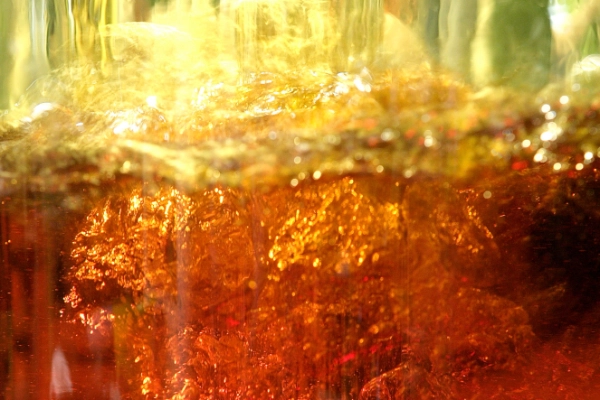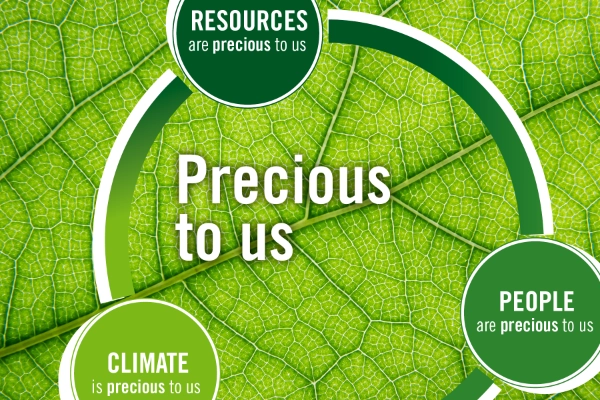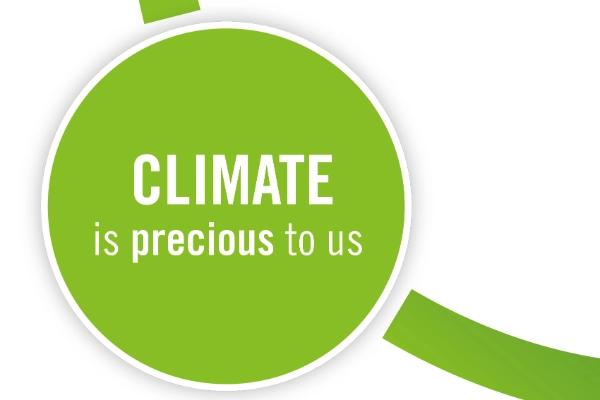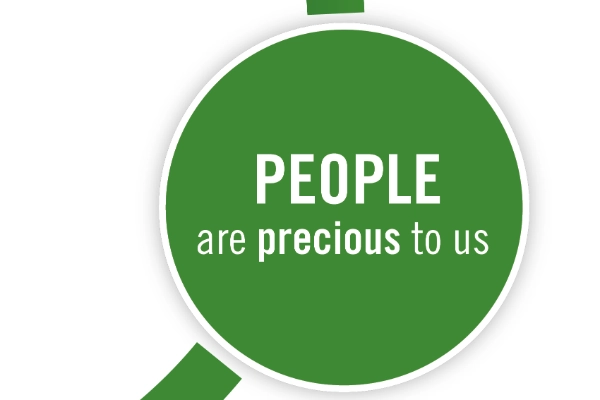Resources Are Precious to Us
Our business activities rely on precious resources. We live up to our responsibility by improving our processes and products so that they require fewer and fewer resources and by adopting circular approaches wherever possible. With recycling we recover large quantities of precious metals, which reduces the need for primary extraction.

Targets and Key Figures
60% share of recycled platinum group metals (PGM) processed in our plants in 2023
60% of platinum group metals (PGMs) and 20% of gold and silver volume processed in our plants are secondary material. We aim to increase the proportion of recycled precious metals in our products.

€300m investment in recycling capacities until 2026
We are continuously expanding our worldwide recycling capacities and capabilities. This allows us to close the loop for further precious metals containing waste. Between 2018 and 2026, we will have invested a total of 300 million euros in further capacities in Europe, North America, and Asia.

-99%1 carbon footprint of recycled vs. primary precious metals
Many of our precious metal products are returned to us at the end of their lifetime. By making new products out of the recycled fine metal, we are continuously keeping recovered precious metals in the loop.

Circular Economy
We refine and recycle all eight precious metals and rhenium from primary and secondary sources. With 13 recycling facilities in eight countries around the world, we not only maintain close proximity to our customers but also achieve shorter transportation distances.
We use state-of-the-art pyrometallurgical and hydrometallurgical processes to recover precious metals from secondary sources, such as end-of-life materials, to the maximum extent possible.
Where we stand
We are systematically expanding our recycling capabilities. In the past years, we invested $120 million in our facility in Nanjing, which significantly increased our recycling capacity in China, and made substantial investments in collaboration with our joint venture in India. A new smelter at our facility in Wartburg, USA, started operation in 2024. At our site in Hanau, Germany, we are investing €33 million to expand our wet chemical recycling capacity for platinum group metals. In addition, a new chamber furnace will enable us to recycle further materials such as fuel cell membranes.
We continually look for new ways to put precious metals back into the loop. One example is urban mining, in which precious metals are recovered from waste material that has not yet been recycled.

Impacts on Environment and Biodiversity
Healthy, well-functioning ecosystems are the foundation of all life on our planet. Both our own operations and our upstream value chain can have significant impacts on the surrounding environment and biodiversity. This is why for us responsible sourcing and use of precious metals also means paying close attention to these potential impacts and minimizing them wherever possible.
Where We Stand
Biodiversity
Starting 2024, we will conduct a biodiversity impact assessment for all our production and recycling sites, including a proximity analysis to identify biodiversity priority areas and features nearby. We will use these findings and refer to initiatives such as the Kunming-Montreal Global Biodiversity Framework to define further mitigation strategies.
Considering the significant potential impacts mining has on nature, we pay close attention to our upstream value chain. There are many examples showing that the precious metals mining industry is aware of its impacts and is taking measures to address and reduce them. We encourage our mining partners in their ongoing efforts to steadily become more sustainable and to promote the global ambitions of halting and reversing biodiversity loss. Therefore, we are placing greater emphasis on biodiversity in our regular on-site assessments and are increasing our efforts to monitor potential drivers of biodiversity loss near mines as well as the countermeasures taken by our mining partners.
Water
Water plays an important role in our operations. For example, it is needed as a solvent or absorbent in our precious metal recycling processes. Accordingly, we always comply with all applicable laws and regulations for managing and handling water and wastewater.
We will continue to expand our reporting pathways for water consumption and increase data quality with a particular focus on the amounts of water that enter and leave our production in the form of chemicals and products. Furthermore, we will analyze the specific water use per site. Our target is to complete this for our sites in Hanau, Mendrisio, and Nanjing, which account for over 60% of our water withdrawal, by the end of 2024.
The biggest share of our water footprint comes from our upstream value chain. Hence qualitative assessments of our mining partners’ water management systems, aligned with the strict LBMA standards, have already been part of all our regular on-site assessments for a long time. We recently started to gather quantitative data on water usage from our mining partners. As we gain more transparency, we will assess our mining partners regarding water and engage with them to find ways to reduce their impact.
Major Projects and Examples
Ruthenium-Based Catalyst for the Production of Green Hydrogen
One of the most promising technologies for producing green hydrogen is proton exchange membrane water electrolysis. About 70 GW of this type of electrolysis are expected to be built worldwide by 2030. Currently, building one GW of capacity requires around 400 kg of iridium. 70 GW of capacity would therefore need about 28 metric tons of iridium, which is more than double the quantity available.
Together with Sibanye-Stillwater, we have developed a ruthenium-based catalyst to mitigate potential iridium supply bottlenecks. With the new catalyst, only 30-150 kg of iridium are needed for the production of one GW of capacity. Overall, the new catalyst significantly improves the sustainability of hydrogen production: It reduces material costs and reliance on the very scarce material iridium.
Circlear: Recycled Precious Metals Are the Sustainable Choice
Our new offering Circlear is made from 100% recycled precious metals, thus coming with a significantly lower carbon footprint. By offering many of our industrial products with Circlear, we enable our customers to reduce their Scope 3 carbon footprint and accurately track their progress toward their sustainability goals: One kilogram of recycled precious metals saves up to 42 metric tons of CO2 compared to primary material.1
Circlear’s 100% recycled content is based on mass balance and has been verified by TÜV SÜD according to ISO 14021 for seven precious metals: gold, silver, platinum, palladium, iridium, rhodium, and ruthenium.
1 “The Life Cycle Assessment of Platinum Group Metals” by the International Platinum Group Metals Association (IPA), Reference Year 2022



